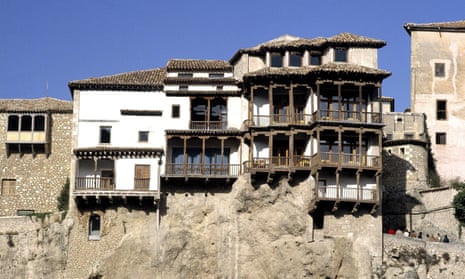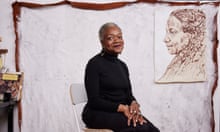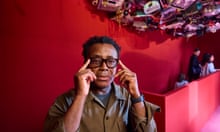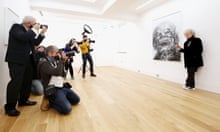In July 1966, as the Beatles were preparing to release Revolver and Spain was approaching the 30th anniversary of the coup that birthed the Franco dictatorship, a Spanish-Filipino artist called Fernando Zóbel threw open the doors of an improbable but visionary cultural outpost.
Based in a clutch of 15th-century houses overhanging a precipitous gorge in the small city of Cuenca, the Museo de Arte Abstracto Español, or Museum of Spanish Abstract Art, had a simple if daunting mission. As Manuel Fontán del Junco, the director of museums and exhibitions at the Juan March Foundation in Madrid and one of the curators of a new exhibition about the institution, puts it, “it was a museum for artists in a country of artists without museums”.
When Zóbel, who was born to a wealthy and powerful family in Manila, arrived in Spain after studying philosophy and literature at Harvard, he was struck by two things. “When he got here, he realised that the Spanish abstract artists were very good but that they had nowhere to show their works when they came back from international exhibitions,” Fontán said. “He also realised that he could collect their works.”
While Spain was home to an entire generation of globally renowned abstract artists – including Eduardo Chillida, Jorge Oteiza, Manolo Millares and Antoni Tàpies – it had done little to honour them.
Zóbel decided to change that by collecting their works and looking for somewhere to show them to the public. A conversation with the painter Gustavo Torner, a native of Cuenca, led to a visit to the city and the discovery that its famous Casas Colgadas (Hanging Houses) had been renovated but were standing empty. Immediately struck by the houses as a possible site for a museum, Zóbel managed to persuade the mayor to let him use the properties in return for a symbolic rent.
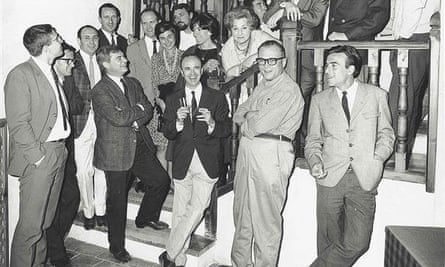
The museum that opened on 1 July 1966 was not only Spain’s first abstract art museum but also, according to Fontán, the “first artist-run space in Spain, and one of the first in the world”. Although the gallery was hailed by the first director of the Museum of Modern Art in New York as “the most beautiful small museum in the world” – a description that gives the exhibition its title – its importance transcended visual art.
As well as showcasing works by the likes of Chillida, Tàpies, Luis Feito and Antonio Saura, the museum operated independently from the cultural framework of the Franco regime and helped transform Cuenca into a hub of artistic production and education.
“I think we can almost say that the Cuenca museum was the first democratic museum in the country because it didn’t ask anyone’s permission to do anything,” Fontán said. “It’s true that if it had gone against the regime, it would have been shut down. It was created on the fringes of the Franco regime’s official cultural policy, but it was dreamed into being by a group of artists, led by Zóbel.”
He said Zóbel and his friends, some of whom were clandestine communists, were united by “a shared desire to create a free space with a library and with works of art where people could make the transition to modernity”.
“The museum had a massive and very exciting impact: artists came to live in Cuenca; successive generations were weaned on the museum and its library – which has things like Ginsberg’s Howl or the complete works of TS Eliot – and there were also monographs and contemporary art catalogues and essays,” Fontán said.
“Just as importantly, there were subscriptions to the important international art magazines of the day, which meant that a little Spanish guy in Cuenca in 1966 could get them. It was easier to get them in Cuenca than in Madrid.”
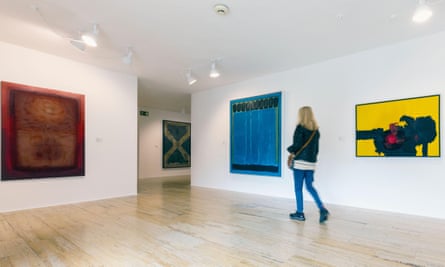
Zóbel, who would have been 100 this year, donated the museum, its collection and its library to the Juan March Foundation three years before he died in 1984.
Fontán said the aim of the show was to tell “the unlikely story of an artist who helped other artists create the first space for modern and contemporary art in our country”.
He added that without Zóbel’s trailblazing vision – and without the artists and works and ideas he gathered inside the Hanging Houses almost 60 years ago – Spain would have taken far longer to establish itself as the cultural engine it became after the post-Franco return to democracy.
“What Zóbel did allowed Cuenca, this small city, to move ahead 20 or 25 years before the political experiment of the Spanish transition. Let’s say that the institutionality of art in Spain – that world of criticism, fairs, galleries, museums, collections – would have come later if it hadn’t been for this museum.”
